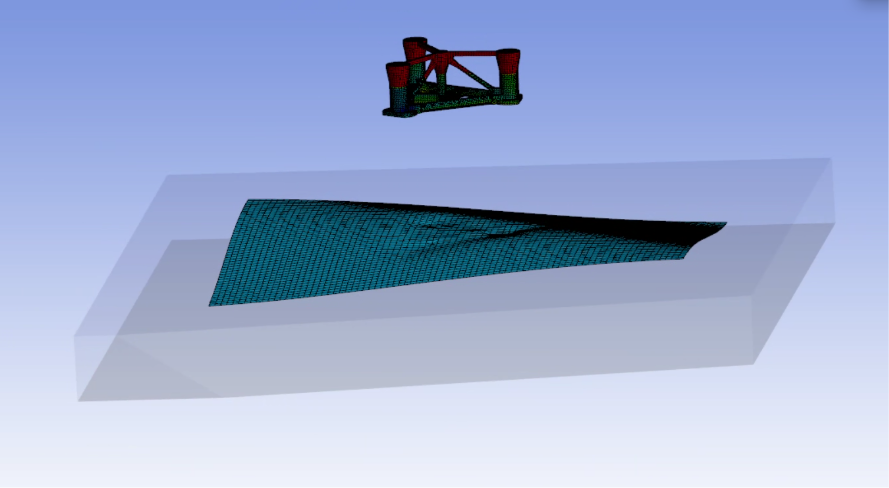TAGGED: ansys-aqwa
-
-
April 26, 2025 at 4:29 pm
2020221038
SubscriberHello,
I am a beginner. I am using the ANSYS AQWA diffraction module to calculate hydrodynamic responses. My model is a floating wind platform with a draft of 21m, a significant wave height of 20.8878m, and a heave RAO amplitude of 1.68. I noticed that in some working conditions, even after superimposing hydrostatic pressure, the model surface remains entirely under tension. Is this reasonable? Additionally, this result occurs near the natural period of heave under significant wave height, and the model "flies into the sky." Is this normal?
Looking forward to your reply. -
April 28, 2025 at 2:38 pm
Shuangxing Du
Ansys EmployeePlease note that Hydrodynamic Diffraction RAO is estimated based on the linear potential theory, no viscous effect and other nonlinear forces are included. When the RAO amplitude of heave (which is the heave linear response due to unit wave amplitude) at a specified frequency, such as at the heave resonant frequency, is greater than 1.0, you may have the problem of the model "flies into the sky" at very large significant wave height case.
For such a severe wave case, please (1) define the viscous drag coefficient in the time domain analysis, altervatively define the equivalent linear damping coefficient to reduce the amplitude of the heave motions at resonant frequency, (2) run time domain analysis with mooring system which will provide more stiffness to restrict the heave motions.
-
- You must be logged in to reply to this topic.



-
3029
-
971
-
858
-
836
-
777

© 2025 Copyright ANSYS, Inc. All rights reserved.








